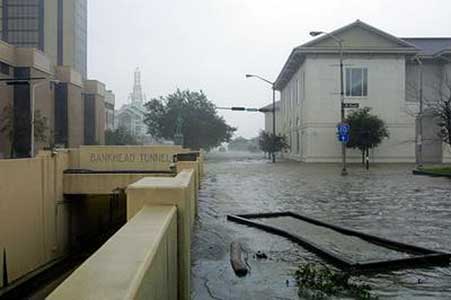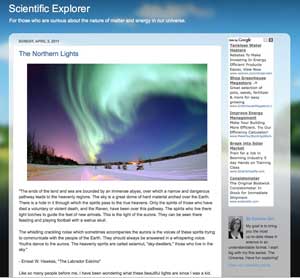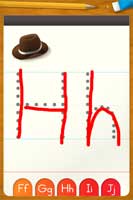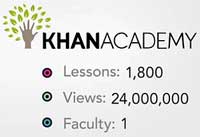mathdittos2.com
...dedicated to...hmmm, we're still figuring that one out... |
Free Stuff for Teachers, Homeschoolers, and Students - 2011
An Educators' News Feature August 23, 2011 This is page 2 of a look back at the freewares, free web sites, open source applications, and a few other goodies that have appeared on Educators' News over the last twelve months or so. If you somehow wandered into the middle of this column, it may make more sense to start with page 1. November, 2010
I poked around the DocsTeach site a bit and found it fairly easy to navigate. Being a bit of a history buff (my college major was U.S. and World History), I got pleasantly sidetracked several times from writing this post while exploring some of the activities provided. While I was a bit put off that I had to register (free) to see the full list of activities for each subject, I had a good time exploring Assessing Richard Nixon’s Presidency and Comparing Civil War Recruitment Posters. I did have to follow a number of links before finally arriving at JPEG and PDF versions of the recruitment posters shown (and linked) below. Royalty-free and hassle-free images for the classroom used to be hard to come by. Even with the fair use principle, teachers wondered if they were inviting trouble by using a copyrighted image on their web page or site. The emergence of several free image sites along with greater use of Creative Commons licensing has greatly eased the job of finding free images to use in the classroom.
While their growing collection of free photos for classroom use isn't the largest repository around, it has a lot of useful images that can be browsed by subject or searched for by keyword. All uploaded photos are screened for acceptable content, making the site safe for student use. One nice wrinkle about Pics4Learning is that if you upload your own images or know the photographer's name, you can search for them by name. Above left is the first page of my listing of photos contributed to Pics4Learning. Photos8.com
Nerdy Photographer Comment (and some sneaky embedded advertising): Sam works with a Canon EOS 40D Creative Commons Licensing Creative Commons licensing has grown in popularity over the last few years. It allows a photographer or photo owner to set less restrictive rights on work than a blanket copyright does. Probably the best place to get a feel of what one can and can't do with images licensed via Creative Commons License is the Flickr Explore/Creative Commons page. The Creative Commons Search page can quickly get one going on finding the right image to illustrate student handouts, Powerpoints, or even feature stories about free stuff for homeschoolers, students, and teachers. It took me just a few minutes to locate a shot by Mel Silvers of the flooding caused by Hurricane Katrina using the Creative Commons Search and Flickr. Desktop Photos and The Cutting Room Floor Several years after launching Educators' News, I decided to share some of my better photos for others to use as wallpapers or Desktop Photos on their computers. In July, I added another free photo download page, Desktop Photos: The Cutting Room Floor. I use it for photos bumped from the main Desktop Photos page when I add new stuff and for photos awaiting placement on the main page (have to have several at a time to fit our table format). For Earth Day this year, I decided to share some of the shots available on our Desktop Photos page on Educators' News...and here. My "use" statement at the top of the Desktop Photos page is pretty clear:
But if you're not going to publish your classroom stuff and need to use one of my images, I'll never know. Free Computer Training A posting on the HECC listserv led me to GCFLearnFree.org, which offers free computer training, including reading and math online tutorials for adults.
I think the first time I linked to Joe's site was in 2001. He had done a review of some then, cutting-edge technology: a microscope that could display its view on one's computer and even project it in the classroom. I'd commented at that time on Educators' News:
We've obviously come a long way since those early, exciting days of computer technology in the classroom. From Joe's Twitter page, I quickly found myself jumping to a page about burning water in homes in the Rosebud River Valley, east of Calgary. After that, I got lost in the Rally to Restore Sanity and/or Fear: A Comprehensive List of Signs. From the extensive list, I'll share just five of my favorites.
The first posting I read, The Northern Lights, was chock full of gorgeous photos and illustrations of auroras. Other postings are pretty much text only, such as Very Hot, Very Cold - Superfluids Demonstrate the Strangeness of Atoms. Another series, Secrets of the Solar System begins with Mercury and goes on from there. An eSchool News article, PBS NewsHour launches student reporting website, tells of PBS NewsHour's Student Reporting Labs site that "connects students with professional mentors at their local public broadcasting station to produce original news reports on important national issues." Beta tested with just six schools last year, PBS is opening up the program to other schools this year, offering "technical instruction on the use of cameras and editing equipment...meaningful focus on understanding the role of journalism in society and developing broader communication skills, including listening, asking questions, public speaking, and finding, analyzing and evaluating the quality of information." I apparently got wrapped up in all the political stuff going on in education during January and February, so there's only one freebie item from that period! Free Letter Tracing App I thought the audio on the app was broken until I realized my iPhone was on vibrate! I also thought the app was just so-so...until one of my granddaughter's tried it and loved it. What Was That Bright Light in the Sky?
When I came inside, I began googling for "minor meteor shower" and the like. I could hardly believe I'd been fortunate enough to see three meteors in a little over a half hour. While there wasn't a major or minor meteor shower going on that night, I did find an appropriate page on Science@NASA, What's Hitting Earth? On that page, Dauna Coulter begins the piece, "Every day about 100 tons of meteoroids -- fragments of dust and gravel and sometimes even big rocks – enter the Earth's atmosphere." Coulter goes on to tell about a new effort and web site, NASA’s All Sky Fireball Network. The site asks and attempts to answer the question, "What was that bright light in the sky last night?" The network is in the process of deploying 15 "specialized black and white video cameras with lenses that allow for a view of the whole night sky overhead." Three cameras are currently in service. They have overlapping fields of view, so the same fireball can be detected by more than one camera. That allows NASA scientists to calculate the height, speed, orbit, and sometimes the source of the meteor. I gave the site a try, only to realize that the meteors I'd seen were not bright enough to be recorded by the All Sky Network. They were about the fourth magnitude, while the network records meteors at or greater than the magnitude of Venus (-4.89 at its brightest). So while my sightings weren't confirmed by the site, it was a cool web exploration. And it's one more tool that could prove useful to teachers.
A second goodie comes from Arcademic Skill Builders releases free educational video games that tells of a bevy of "web-based video games that help students practice basic math, language arts, vocabulary, and thinking skills while in the classroom or at home." The Arcademic Skill Builders games include good directions embedded in each online application. Sorry, but I just couldn't resist using one of the catch phrases for the Immune Attack (IA) learning game for a headline. In this free learning game, students "must navigate a nanobot through a 3D environment of blood vessels and connective tissue in an attempt to save an ailing patient by retraining her non-functional immune cells." The creators of IA seem to be continually looking for classes of middle and high school students to play and evaluate the game to help guide the development of version 2.0. "A small compensation...is offered" for classes participating in the test. And while the title Find the Fun in Immunology is a bit geeky, FAS's Melanie Stegman does make her case for it well:
I sent Melanie an email that prompted some good news. Since my newest PC is too old to run Immune Attack (I tried.), and I work primarily on a Mac, her prompt response was welcome: "You will love Immune Attack 2.0. It will be PC, Mac and Browser based. :-)."
The second unit explored suffered a bit from too much time spent on the first, but was still a welcome exercise. Study Activities for Harry Potter and the Half-Blood Prince reminded me of the many novel groups we used to teach in sixth grade where we replaced the basal reader with high interest, level appropriate novels for our kids. We spent hours preparing our units. Such activities on TeachersFirst could be a real time saver for teachers. The Harry Potter unit appears to be a good one. One can get lost in this site and occasionally frustrated finding things. After the Harry Potter study guide, I searched for similar study guides, but the listing was all over the place. A page of study guides for novels would be helpful. The site includes a weekly Featured Sites page, Resources by Subject & Grade, and a delightful Question of the Week for teacher discussion. From the Question Archives, I pulled up the question, "Many strategies are being discussed to improve student achievement and/or balance budgets. Would you be willing to teach larger classes (35-40+) for higher pay? Why or why not?" The responses are something our President and SecEd should read before they continue suggesting that larger class sizes are a viable option for America's classrooms. TeachersFirst isn't one of those "pretty sites" that have spent a ton of time and money on page design at the expense of content. I was overwhelmed with all of the good, free resources there. I've left out lots, but I've got to sneak in their Tools to Use "In the Trenches" listing. It's practical stuff that can make your day (or school year). Teachers First has revamped their site since my original review of it. Some of the links above are to their legacy site. BTW: The same writer who did the resources piece has published another for mobile devices, Ten of the best Droid apps for education. It's another good attempt at an idea, but any top ten that focuses two of its top ten on student gradebooks, which most teachers already have to use via their schools' required use SIS software, is pretty lame.
Some videos, such as NOVA's The Embryo Takes Shape, take the viewer off site (which could present a problem with school filtering software). And others like The Stages of Mitosis were choppy because our home satellite connection was just too slow to handle them. One, the Helping Verb Song, which I really wanted to see, simply wouldn't play due to our slow connection. The cataloging and organization of the site is excellent, if a bit unusual at times. When I looked for American History, I found what I was looking for under History of the United States. Declaration of Independence - Remember this includes quotes from Thomas Jefferson followed by present and former NFL players reciting the Declaration. The commenter to the article wrote, "WatchKnow.org has over 23,000 free, educational videos vetted by teachers for teachers in a super-convenient and intuitive directory covering every topic imaginable." I've got to agree. March generally isn't the time of year you'd introduce a science fair to your students, but I'll definitely forget this resource if I don't put it in print right now! A Chris Dawson posting on his ZDNet blog, Oh, that's how you do a science fair project, led me to Prepare for the Science Fair on YouTube. The fifteen minute animated video by Kevin Temmer, a high school student in Florida, is designed for use with middle school students. It pretty well covers the basics of doing a good science fair project. Chris also did an interesting email interview with the creator of the video. Memidex A press release in March reminded me of a site I first covered in our The Freewares of 2009 feature story. Since publication of that story, the free Memidex online dictionary and thesaurus has grown up quite a bit. Memidex still uses its own definition derived from the WordNet database developed by Princeton University, but now adds definitions from lots of other sources. They also offer some tools which might be helpful for some users, and thankfully, provide audio pronunciations for those of us who haven't fully memorized a pronunciation key. Note: I find myself using Memidex more and more. I like its listing of multiple definitions and sites. Something a Bit Different The Khan Academy is a not-for-profit site that provides free ten minute video lessons and exercises "especially purposed for viewing on the computer." This unique site covers "K-12 math, science topics such as biology, chemistry, and physics, and even reaches into the humanities with playlists on finance and history."
One of the things I really liked about Khan Academy lessons is that the videos are really sharp, but still optimized so as not to be choppy on a slow internet connection. I even loaded some other web pages while viewing several lessons to try to make them choppy, but found most of the lessons played smoothly, even under a slow or crowded connection. Login at Khan Academy requires either a Google or Facebook account and password. Students log in and may select a "coach" that can be a parent, tutor, or even their teacher (if they've set up an account). Teachers can see stats of student progress on the site as well. Since all the lessons I sampled were YouTube videos, teachers also have the option of embedding the YouTube video in online lessons of their own creation on their web site or a Blackboard or Moodle site. I didn't test the teacher stat features, however, as I'm pretty guarded with my usernames and passwords. For balance, you might want to look at Mike Doyle's evaluation of the Khan Academy in his No Khan Do posting.
Continued on page 3 (April - August, 2011) Send Feedback to |
updated 8/23/2011 9:19 pm EST
©2011 Steven L. Wood


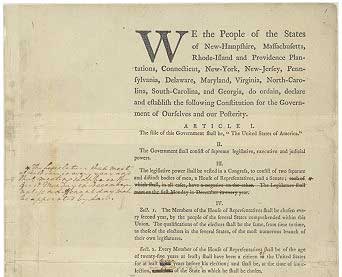
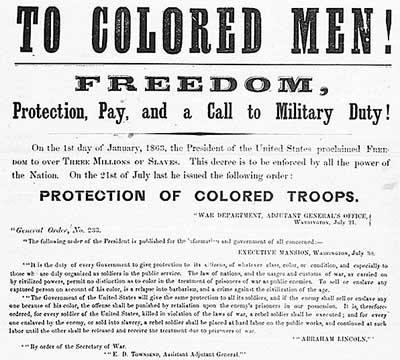

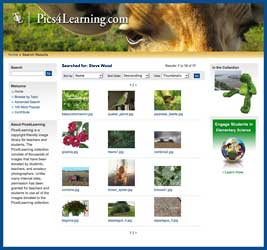


 I looked at some of Sam's
I looked at some of Sam's 